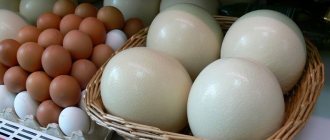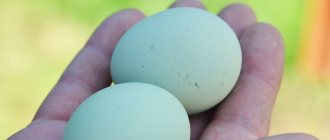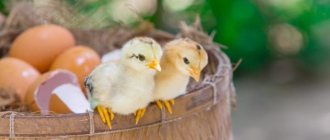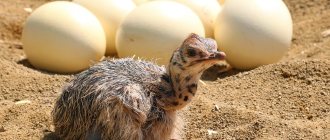Ostrich farms are mostly profitable enterprises. Many entrepreneurs today would like to organize such a profitable business in Russia. And, of course, novice farmers who decide to keep ostriches have many questions regarding the rules for keeping and breeding a finicky exotic bird.
For example, how often do ostriches lay eggs? How to properly collect, store and incubate them? Find answers to these and other questions in our article.
How do farms make money?
Farms specializing in ostrich farming organize several sources of income at once. In addition to excursions to the farm, entrepreneurs organize sales of:
- meat;
- ostrich leather;
- fat;
- feathers;
- eggs
Ostrich meat, like chicken, is considered a dietary product. It contains little cholesterol and is very popular among consumers. Now ostrich meat has surpassed beef and pork in popularity - its excellent taste and ease of preparation have captivated many housewives. Farmers sell ostrich leather, which has a unique texture, to factories for making clothes and shoes. Products made from it are soft, pleasant to the touch, and comfortable to wear.
The fat is sold to pharmaceutical and cosmetics companies. Ostrich feathers are used mainly for decorative purposes. Since they also have dielectric properties, they are often used to clean dust on electrical appliances.
Where can I buy?
Today, buying ostrich eggs is common. You can purchase the product in specialized stores, on farms or order it online. Here are a few places to buy good quality ostrich eggs:
- Private farms that specialize in breeding ostriches are the best place to buy. For example, the Russian Ostrich farm, which is located in the Moscow region, is one of the largest ostrich farms today. On the farm's website you can see the range of products; they offer table eggs, empty or decorated shells. You must inquire about delivery by calling the phone numbers provided on the website.
- The Ostrichland farm is no less famous among fans of the delicacy; it delivers table ostrich eggs throughout Moscow and the Moscow region. In addition, it offers various natural products for sale, and also conducts tours of the ostrich ranch.
- Food stores. Not many grocery stores carry ostrich eggs, but there are a few places where you can find the product. For example, the Azbuka Vkusa supermarket chain not only sells eggs, but also delivers throughout Moscow and the Moscow region and is a trusted supplier.
The average cost of an ostrich egg ranges from 800-2000 rubles, depending on weight.
Ostrich eggs
Farmers earn quite decent money from poultry meat, fat and skin. Ostriches grow very large; the weight of an adult can reach 160 kg with a height of 2 m. However, ostriches also produce another product that can bring excellent income to the farmer. Birds live 50-70 years, and for most of their life (about 40 years) they are able to lay eggs, the weight of which sometimes reaches 1.5 kg. So the answer to the question of how many eggs an ostrich lays per year and during its life is of interest to many novice entrepreneurs, we will talk about this below.
Farmers leave some of the eggs for incubation, since the population of ostriches, if they are also bred for the sale of meat, fat and skin, periodically needs to be replenished with young individuals.
Farmers sell some of their ostrich eggs for sale. In Russia, mainly expensive restaurants that offer exotic dishes to their customers are interested in such products. In Europe, ostrich eggs are often used in baking bread, buns, or making confectionery.
Amazing facts
Some amazing facts about ostrich eggs:
- The largest ostrich egg was recorded in China, weighing 2.35 kilograms with a diameter of 18.67 cm.
- Only the hatched chicks were 12 cm tall and 500 grams of weight.
- During the mating stage and after the birth of chicks, females become quite aggressive. Emus often express themselves this way.
- Ostrich eggs are lower in calories than chicken eggs.
- This product contains a huge amount of selenium and sodium.
selomoe.ru
How often do ostriches lay eggs?
How much can a farmer earn from selling eggs, and how quickly does the herd of ostriches replenish? Females of this exotic bird usually begin laying eggs at the age of two years. However, male ostriches reach sexual maturity only at four years of age. This is exactly the period the farmer needs to wait so that the selected male breeder can fertilize the eggs.
Exotic giant birds fly differently than chickens and other poultry. The question of how many eggs ostriches lay per month, for example, may be somewhat incorrect. Their egg laying, unlike chickens, occurs in cycles of 30-40 days. Female ostriches have about three such productive periods per year. Using certain care technologies, farmers achieve 4-5 cycles per year.
During the productive period, female ostriches usually lay eggs every other day, most often in the afternoon. That is, the answer to the question of how many eggs an ostrich lays, the answer will be: 15-20 eggs per cycle and about 60-100 eggs per year.
What determines quality egg laying?
Female ostriches lay their first eggs at 2 years of age. It occasionally happens that they begin to lay eggs before this (at least 1.5 years). Birds continue to lay eggs until they are 45 years old. Ostriches live on average 65 years. There are 10 days between laying periods. In winter, giant birds do not lay eggs.
According to statistics, in the first year of life, an ostrich lays 15% fewer eggs than in the future. This is due to the continued growth of the bird and energy conservation. There are also situations when a bird does not produce potential offspring and remains alone for a whole year.
This is what a clutch of African ostrich eggs looks like
The following 5 factors influence quality egg production:
- Conditions for keeping birds.
- Free movement of birds. The lack of free territory for walking negatively affects the lifestyle of exotic birds. When free, giants gain weight well and rush.
- The presence of greens, roots and pebbles in the diet. The digestive tract of ostriches needs solid food: pebbles and roots involved in grinding food. In adult birds, the stomach can hold up to 1 kg of small pebbles. Birds need to be provided with a diet of plant components: seeds and greens. Ostriches have a special digestive system. They do not have a crop, which facilitates the rapid digestion of roughage. A powerful stomach and an elongated part of the intestine enable birds to consume coarse vegetation.
- Comfortable temperature conditions in the room where birds live. Ostriches love warmth, so cold rooms are not suitable for keeping them. The farm must maintain a temperature range from +15° to +20°C. If the comfortable temperature is violated, ostriches will not lay eggs.
- Stress. Frequently moving individuals from one pen to another or transporting them to a new farm is fraught with stress for the birds. And nervous and restless females do not lay eggs. Before forced transportation, birds need to be saturated with a double dose of vitamins.
Housing conditions affect poultry productivity
Usually the female lays eggs every other day, after which she rests a little (a week or two) and gains strength. Healthy birds produce a fertilized product that is 92%. It is possible that at the beginning and at the end of the season there will be unfertilized eggs in the nests.
The product is formed within two days. Favorable keeping of birds and a complete vitamin diet allow you to get up to 15 pieces of product in one period. Females have from 2 to 4 such cycles.
You can buy ready-made food or prepare it yourself
How ostriches rush
So, we found out how often ostriches lay eggs. But what conditions should be created on a poultry farm in order for it to increase productivity? As with chickens, farmers install nests in the aviary and rooms for ostriches. They are most often installed in the most secluded corner. Like chickens, female ostriches do not choose or defend their “private” space. Several giant hens can lay eggs in the same nest.
Female ostriches take turns guarding the clutch. At night they are usually replaced by males. A bird usually has 20-25 incubated eggs in one nest.
Who is the tallest in the world?
Of course, even among record holders there are their own record holders. What height record can an ostrich have? For example, today the largest growth of this bird in the world was recorded several years ago. One of the African males, who was part of a research group on the development and reproduction of the species, reached a height of 3.1 meters.
This is the highest figure to date.
Yes, what can I say, ostriches really deserve our attention and respect, and they are also very interesting. Read about all its advantages, as well as the features of cultivation, on our website in the following publications.
Other basic parameters
“Of course, such a huge bird must have a lot of weight?” - many people ask. Yes indeed. The ostrich is not only the tallest bird in the world, but also the heaviest. The average weight of a male ranges from 65 to 75 kilograms, the female gains about 55-60 kilograms. But there are also real “giants”. For example, the weight of one African representative was recorded as 131 kilograms.
In addition, these feathered representatives lay the largest eggs. But we can also say that relative to the parent’s body itself, they are small. The length of one egg can vary from 15 to 22 centimeters, but its weight is also considerable - up to 2 kilograms. Can you imagine the size of scrambled eggs from this one product?
If we compare them with the eggs of other poultry, then this is approximately the same as 35 chicken eggs. The color of the egg shell is white with yellowish tint, while residents of the northern regions of the continent lay about 20 eggs, while residents of the south - up to 60. The female lays eggs in 1-2 days.
A newly hatched chick also weighs quite a lot. On the first day of his birth, he can already be about 1.2 kilograms, and over the next three months he gains weight up to 19 kilograms for the male and 18 for the female. Find out some more information about these unusual creatures from the video.
How to pick up eggs?
We found out how many eggs an ostrich lays per day. In a cycle of two days, the giant bird lays an average of one egg. It is quite expensive on the market, and therefore the eggs laid by ostriches must be handled very carefully and correctly. Collection, storage and transportation of the most valuable product is a responsible procedure. The loss of even a few ostrich eggs can result in significant losses for the farm.
It is advisable to take each egg for storage immediately after it is laid. That is, you need to constantly check the nests in the room reserved for the birds or in the outdoor aviary. Farmers who breed ostriches have noticed that frequent collection of eggs stimulates female ostriches to continue laying: in this way, the bird subconsciously tries to make up for the loss of “offspring.”
The answer to the question of how many times an ostrich lays eggs per cycle is 15-20 eggs, so the farmer will have to look into the birds’ nests more often.
Ostrich eggs must be collected immediately, but the laying hens themselves must not be disturbed during the procedure. If the female has already done her “work” but has not yet left the nest, you should not approach her. It is advisable to collect ostrich eggs without attracting the attention of the bird. The habits of the males of these giant representatives of the fauna also include the protection of the clutch, so the ostriches will have to be distracted with something before collecting the eggs. Otherwise, the farmer may be seriously injured by the angry bird.
Before collecting eggs, the farmer should wash his hands with soap and prepare a container in which he will place the eggs. When collecting ostrich eggs, under no circumstances should you make any sudden movements. You should place eggs in the basket as carefully as possible so as not to break the precious product.
Characteristics of eggs
The shell of such a fruit is extremely similar to porcelain, therefore it is used in artistic direction. A variety of products are made from it and painted or engraved.
The eggshell is surprising in its large size and it is fairly light, but is highly durable. Such a shell is difficult to break. Its color scheme is associated with the color of bird feathers.
Stately, dark-colored Emu ostriches lay dark greenish eggs, white-gray birds are stockier, but bear picturesque pink-yellow fruits.
The yolk has a rich yellow color. To hard-boil an ostrich product, it will take 1 hour and 15 minutes.
The eggshell is surprising in its large size, but it is quite light, but durable. It's hard to break. The color scheme of the eggs is associated with the color of the feathers of the individuals.
Proud Emu ostriches with stately necks and dark colors lay dark greenish eggs, white-gray birds are more squat and bear beautiful pink-yellow fruits.
The yolk has a rich yellow color. To prepare hard-boiled eggs, cook for 1 hour and 15 minutes.
Only one egg is taken to prepare one dish. But, often this is a lot, so you can cook it in parts, and store what’s left in the refrigerator for no more than 2-3 days. Due to the good strength of the shell, ostrich eggs can last up to three months.
The ostrich egg is highly durable and you can stand on it without fear.
What to do after collection
We found out how often ostriches lay eggs. You need to pick up the clutch on time and store the eggs with all precautions. After collection, each egg is inspected for cracks. A specimen with defects should be set aside and consumed as quickly as possible. Contaminated eggs are carefully washed and dried. This simple procedure has its own subtleties: you can wash ostrich eggs only with warm water, the temperature of which is approximately +40 °C. Cold water should never be used, otherwise the ostrich eggs will begin to “wrinkle,” which will cause pathogenic microflora to penetrate the shell, which will kill the unhatched chick or infect it with an infection.
You need to add a little iodine or bleach to the water for washing eggs. Dried stains must first be soaked. It is strictly forbidden to scrape them off, for example, with a knife, otherwise you can damage the outer layer of the shell, which will also cause infection of the protein and yolk by microorganisms and, as a result, rapid spoilage of the product.
How to properly incubate
When ostriches begin to lay eggs, we found out earlier in the article. For incubation, farmers collect eggs only from young laying hens at least 2-3 years old, provided that they have been fertilized by mature males over 4-5 years old. If eggs are intended for incubation, they can be stored for no more than 7-10 days. Of course, to breed ostrich chicks artificially, you should purchase special equipment.
Provided that eggs are continuously laid in a special incubator, the optimal temperature for the development of embryos will be +36...+36.5 °C. The humidity should be equal to:
- for African ostrich eggs - 20-35%;
- rhea - 23-35%;
- emu - 32-44%.
Immediately when laying eggs, the temperature in the incubator is raised to +37.2 °C. Then the temperature is gradually, over about 5 days, slowly reduced to the required +36 °C. At the end of incubation, the temperature is reduced to a value that is 2 °C higher than the ambient temperature.











